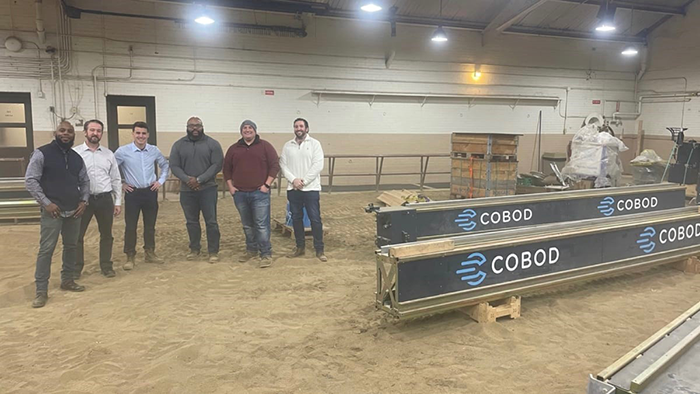
Ohio State University goes big with 3D construction printing
Pantheon3D, a Youngstown-based additive manufacturing construction company, received COBOD’s BOD2 3D construction printer to the Ohio State University’s Center for Design and Manufacturing Excellence (CDME) in early January of this year.
Pantheon3D aims to provide high schools, trade unions, and construction inspectors in Ohio with access to cutting-edge research through its alliance with CDME. This multidisciplinary research cooperation will involve testing, print demonstrations, student experiments, curriculum enhancement for workforce development, and student learning.
Ryan Kelly, a CEO of Pantheon3D, said: “We are extremely excited for the opportunity to work with two amazing organizations like CDME and COBOD. This partnership will help us create a model to reimagine, retrain and recruit the future construction workforce. We believe that is essential to growing Ohio’s housing portfolio and further establishing the state as the home of innovation in the United States.”
Partnership Manager for COBOD International, Vincent Albanese, shared that using 3D printing to construct homes is a game-changer for the construction industry. “We already have strong partnerships with universities worldwide, and supplying another 3D printer to a university, especially one with the size and credentials of OSU, further cements COBOD’s position as industry leader in the 3D construction space.”
According to Lisa Burris, Assistant Professor and Civil Materials Researcher at The Ohio State University, the institution provides a unique environment for the necessary partners and experts to rapidly improve and accelerate deployment of the 3D printed concrete technology, thereby providing the greatest benefit to local communities.
To convert novel technology into products that are ready for the market, CDME collaborates with businesses and researchers. These initiatives provide student workers with practical, hands-on experience, and integrate new technologies, while giving clients the competitive edge they need in the workforce. These collaborations will also give graduate and undergraduate students exceptional opportunities to interact with professionals outside of their own fields of study and technical specialties, and they will teach them the value of forming diverse teams.